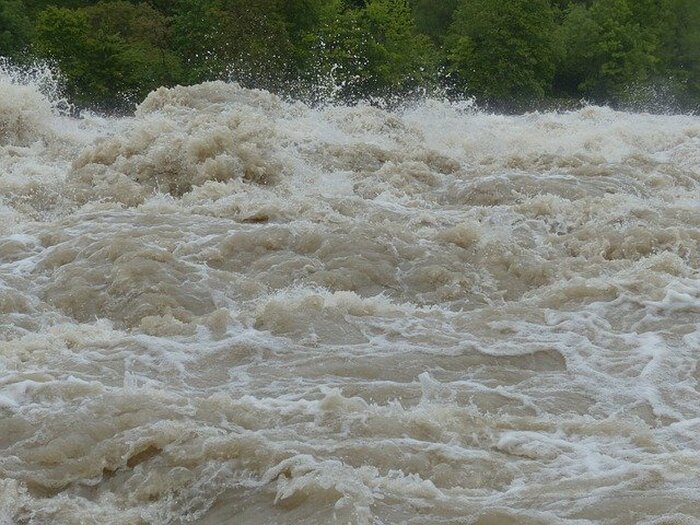The Risks of Acute GI Illness Due to Increased Precipitation
Many individuals are aware of the risks of drought and global warming that result from climate change, but tend to overlook the opposite effect that also comes with climate change—increased precipitation. As global warming leads to higher levels of evaporation, regions with usually high precipitation rates will experience even heavier rainfall and increased risk of flooding. In a recent study conducted in Philadelphia, a Northeastern city heavily impacted by precipitation, researchers found that heavy precipitation may lead to health problems, specifically spikes in reported acute gastrointestinal illness (AGI).
How does increased precipitation result in an increase in cases of AGI? With heavy rainfall, there is a higher risk of water contamination, especially in communities that rely on combined sewer systems. When the volume of water suddenly increases in these systems (often due to heavy rainfall), combined sewer overflows can occur, in which untreated sewage water consisting of human and industrial waste, bacteria, and other toxic substances leaks into nearby water bodies. These can include rivers or streams used for water supply, so when civilians come into direct contact with the contaminated water source for daily needs of drinking or washing, they are exposed to certain microbes that are strongly resistant to disinfection, such as Cryptosporidium species that can cause gastrointestinal illnesses.
The study tracked rainfall using measurements from the Philadelphia International Airport, as well as the number of daily cases of conditions featuring diarrhea and/or vomiting (common symptoms of AGI) reported by Philadelphia’s emergency departments to test for any correlation between the two. Over the study period, the highest number of daily reported AGI cases occurred during springtime in March with 235 counts. Generally, AGI counts increased during the cold and rainy season of winter with an average of 128 counts, while decreasing during the summer months to an average of 91 counts. This hinted at a potential correlation between climatic patterns and AGI cases.
How does increased precipitation result in an increase in cases of AGI? With heavy rainfall, there is a higher risk of water contamination, especially in communities that rely on combined sewer systems. When the volume of water suddenly increases in these systems (often due to heavy rainfall), combined sewer overflows can occur, in which untreated sewage water consisting of human and industrial waste, bacteria, and other toxic substances leaks into nearby water bodies. These can include rivers or streams used for water supply, so when civilians come into direct contact with the contaminated water source for daily needs of drinking or washing, they are exposed to certain microbes that are strongly resistant to disinfection, such as Cryptosporidium species that can cause gastrointestinal illnesses.
The study tracked rainfall using measurements from the Philadelphia International Airport, as well as the number of daily cases of conditions featuring diarrhea and/or vomiting (common symptoms of AGI) reported by Philadelphia’s emergency departments to test for any correlation between the two. Over the study period, the highest number of daily reported AGI cases occurred during springtime in March with 235 counts. Generally, AGI counts increased during the cold and rainy season of winter with an average of 128 counts, while decreasing during the summer months to an average of 91 counts. This hinted at a potential correlation between climatic patterns and AGI cases.
Image Source: Hans
The researchers noticed that 8–16 days after a heavy precipitation event, referred to as lag days, AGI cases significantly increased. During the spring season when total precipitation level was above the 95th percentile (corresponding to heavy precipitation), AGI incidence increased by 102%, with case reports peaking on the 9th day after heavy rainfall. This increase in AGI remained statistically significant from the 7th day through the 28th day after the heavy precipitation event. More specifically, for regions using water sourced from the Delaware River—which has a greater streamflow than Schuylkill River source water—AGI cases increased 342% and peaked on lag day 13 during springtime. Schuylkill River source water was linked to an AGI case increase of 243% that peaked on lag day 8. However, the effect of increased streamflow on AGI cases was ultimately deemed statistically insignificant. Although the spike in AGI cases relative to precipitation levels during springtime was apparent, this initially appeared to be surprisingly inverted during summer, with heavy precipitation actually lowering AGI cases. Once cumulative precipitation was factored in, however, no association was noted between AGI and summer rainfall. The study concluded that the association between precipitation and AGI cases held true only during the spring season.
Despite the narrowness of this finding, the fact that increased precipitation due to climate change affects AGI cases remains true. The danger of heavy rainfall causing combined sewer outflows to contaminate drinking water with untreated pathogens can be a serious health concern if unpredictable and extreme precipitation continues. Although more research on reducing exposure to microbes in contaminated water is encouraged, the root of the problem lies with climate change and should be addressed at all costs.
Despite the narrowness of this finding, the fact that increased precipitation due to climate change affects AGI cases remains true. The danger of heavy rainfall causing combined sewer outflows to contaminate drinking water with untreated pathogens can be a serious health concern if unpredictable and extreme precipitation continues. Although more research on reducing exposure to microbes in contaminated water is encouraged, the root of the problem lies with climate change and should be addressed at all costs.
Featured Image Source: PublicDomainPictures
RELATED ARTICLES
|
Vertical Divider
|
Vertical Divider
|
Vertical Divider
|






